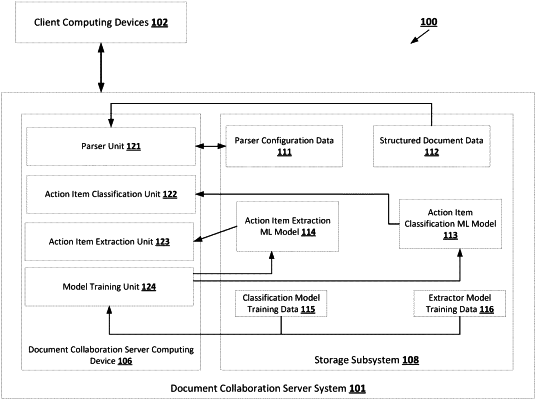| CPC G06F 40/30 (2020.01) [G06F 40/205 (2020.01); G06N 20/00 (2019.01)] | 20 Claims |

|
1. An apparatus for generating action item log user interface data for a webpage that displays content data associated with a document data object, the apparatus comprising at least one processor and at least one memory including program code, the at least one memory and the program code configured to, with the processor, cause the apparatus to at least:
parse the content data to identify a plurality of content segmentation units based on one or more of semantically complete unit of text data associated with the content data, semantically incomplete unit of text data associated with the content data, or a content hierarchy associated with the content data;
for each content segmentation unit, process the content segmentation unit using an action item classification machine learning model to determine an action item presence prediction for the content segmentation unit, wherein the action item presence prediction for each content segmentation unit comprises one of an affirmative action item presence detection indicating that the content segmentation unit comprises one or more action items or a negative action item presence detection indicating that the content segmentation unit fails to comprise an action item;
determine, based on each action item presence prediction, a candidate action item subset of the plurality of content segmentation units;
for each content segmentation unit in the candidate action item subset, process the content segmentation unit using an action item extraction machine learning model to generate an action item set for the content segmentation unit, wherein the action item extraction machine learning model comprises: (i) a part-of-speech tagger model that is configured to generate a part-of-speech tag sequence for the content segmentation unit, and (ii) a sequence processing model that is configured to generate the action item set based on the part-of-speech tag sequence; and
generate an action item log based on each action item set for the candidate action item subset, wherein the action item log is configured to be used to generate the action item log user interface data for an action item log user interface element, and wherein the action item log user interface element is configured to be displayed to an end user of a computing device.
|